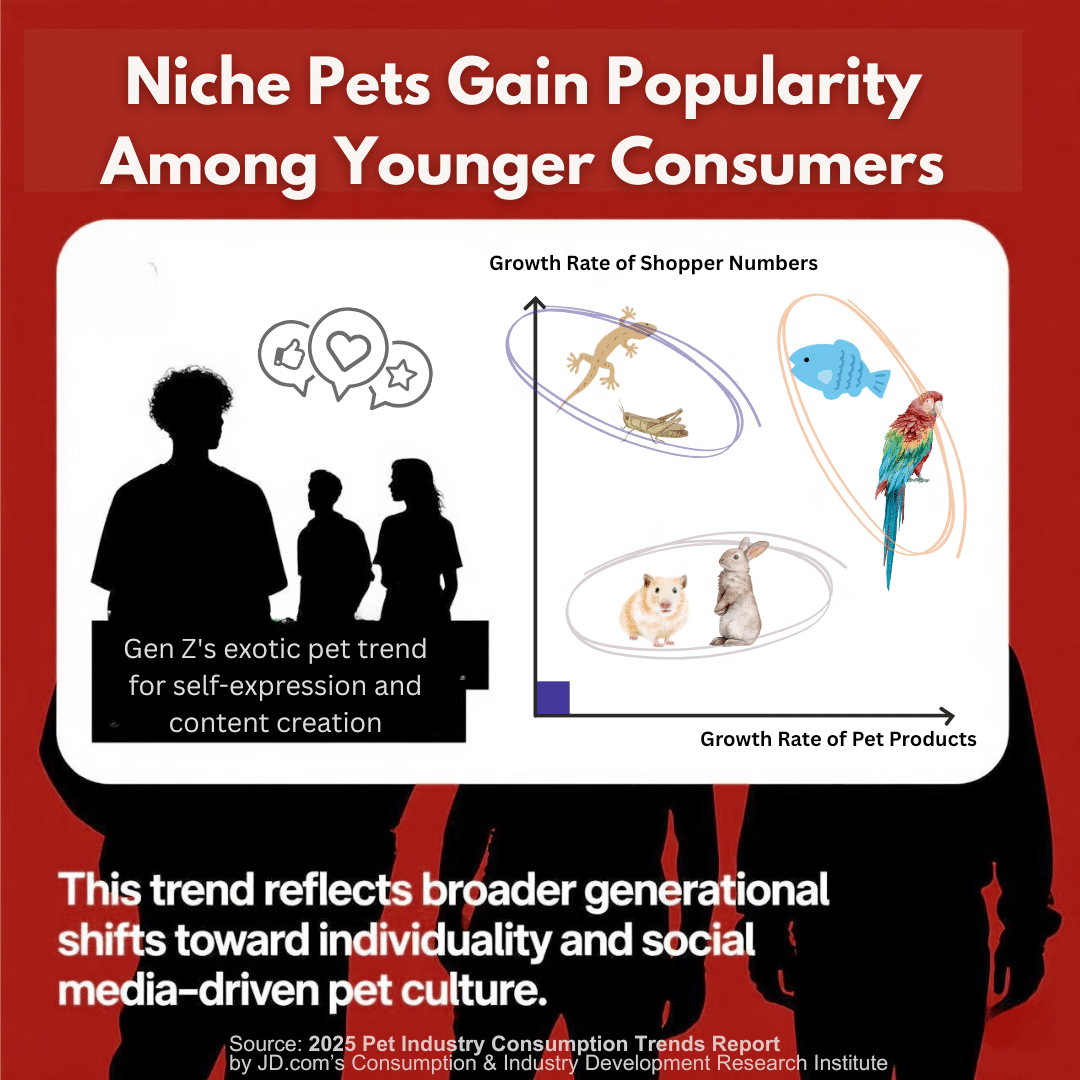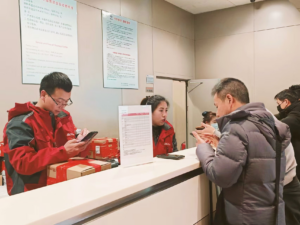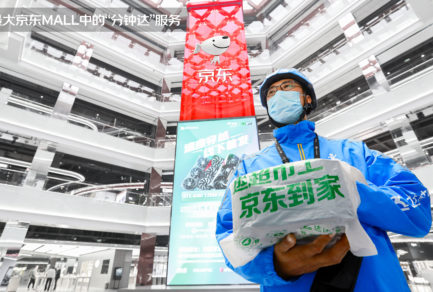Oct 15, 2020|
In-Depth: Behind Richard Liu’s “Bountiful Harvest”
by Ella Kidron and Yuchuan Wang
“This year, JD.com’s U.S. market value has risen nearly 140%, bringing it into the hundred billion camp,” an article in domestic Chinese media outlet Huxiu.com (虎嗅) wrote. Behind the rise is a secondary listing on Hong Kong Stock Exchange, a Dada-JD Daojia valued at 550 million USD, a RMB 20 billion yuan JD Digits on its way to listing on China’s STAR Market, and JD Health, which according to public estimates, is valued at US$ 30 billion. Behind all that, however, is the visionary thinking and quick feet of founder and CEO Richard Liu.
Self-built logistics
In 2008, JD posted an announcement on its website discouraging users from placing orders, and even more surprisingly, encouraging them to go elsewhere to buy things. The reason? JD’s warehouse had beyond reached its capacity – it couldn’t keep up with the pace of demand, meaning that products couldn’t enter or leave the warehouse, and that delivery was left utterly paralyzed. In decision-maker Liu’s eyes, this move, which undeniably would impact business itself, was an imperative. The damage to customer experience due to the delivery delays would be much more costly in the long run than the loss of sales. At the time, JD’s hard disk repair rate was extremely high, attributed to third-party logistics players’ careless loading and unloading.
Beginning in 2007, under Liu’s direction, JD decided to develop its own logistics network from scratch. The reason was quite simple – China’s logistics network at the time was too fragmented and there wasn’t a player who could guarantee the quality that Liu so required in order to provide the best customer service out there. At the beginning, in the areas that the business which today is independent business group, JD Logistics, covered, JD guaranteed 100% next-day delivery and 40-50% same day delivery. To further solidify JD’s differentiation in the market, Liu introduced the “211” concept. Essentially, orders placed before 11:00 am would arrive the same day, and orders placed before 11:00 pm would arrive before 3:00 pm the next day. At the time, when JD’s coverage area was limited, this far exceeded any of the existing delivery standards offered by other players, and today, with much more extensive operations, it remains the gold standard, and JD is the only company of its size in the world to live up to such a promise. This is because for Liu, it is not about looking at the competitor and seeing where they are, but rather putting one’s full focus on the user. Through 211, JD created a new type of value, and that value has driven consumer loyalty.
A comprehensive health ecosystem
In 2014, Taizhou, which is also known as “China Medical City” operates a 30 square-kilometers pharmaceutical High-tech Zone, approached JD with the desire to build an online “medicine city”. The first team Liu sent to evaluate the project returned saying that it couldn’t be done – there is no policy and the risk is too big. Steadfast to making it happen, Liu again sent Lijun Xin, today’s CEO of JD Health to give it another go – it was going to be too difficult. Years of entrepreneurial experience, however, had given Liu an extremely keen sense that things that were easy to do rarely produced value. He told Xin’s team, “There are plenty of problems in the medicine and the pharmaceutical industries. The opportunities are enormous.” There was only one path and one direction to move – forward.
By 2016, JD had already established its footprint in the pharmaceutical sales industry, and become the largest internet retailer of pharmaceuticals. But Liu saw that they needed to develop the business in step with the health industry, not purely retail. He told Xin that he wasn’t sure how big the business could become, but if they were to do it well, the scale might be able to match that of JD.com itself. The health business could be “another JD”.
The company also wanted to realize 211 in health. In order to enabling coupling with offline hospital resources, JD made its way around China’s over 2,700 AAA hospitals (the highest classification for hospitals), eventually brining the large majority of them into JD Health’s “Family Doctor” program, which provides people subscription-style access to doctors all around the country through online consultation services (as well as the option of follow up offline in some cases). The program both expands access to top doctors in places that one would typically have difficulty tracking one down, and also helps to reduce bottlenecks in hospitals with high demand services.
As China’s largest pharmaceutical retailer, JD Health covers medical and health e-commerce, internet-based medical service, intelligent hospital solutions, and consumer healthcare services. It has a team of over 300 full-time online doctors who handled upwards of 150,000 patient interactions or more a day during the height of COVID-19.
Where digital technology meets industry
This year, JD ranked among the among the top five TMT (Technology, Media, Telecom) companies in R&D investment on a list of top 500 Chinese enterprises by R&D. In 2019, listed and unlisted enterprises under the umbrella of JD invested a total of RMB 17.9 billion yuan in R&D, with a year-on-year increase of up to 47.8%. This investment stems from yet another common trend in the JD story – making each and every piece of the puzzle smarter through technology as the company’s own technology capabilities have continued to improve. JD Digits, a leading Chinese digital technology company which started as JD Finance, is a piece of the puzzle. CEO Chen Shengqiang realized that the company could make its mark on various industries by providing underlying digital technology infrastructure. JD Digits’ widely anticipated IPO is expected to be the biggest digital technology IPO on the Star market.
The company reported 1H 2020 revenue of RMB 10.327 billion yuan, according to its prospectus, and has 600 financial institution clients including commercial banks, insurance companies, funds, trusts and securities companies. It has served one million small and micro enterprises, 200,000 small and medium-size enterprises and 700 large business centers with its business and technology solutions. In terms of government and other client services, JDD has served more than 40 urban public service organizations with the smart city operating system as its core product. It has a huge IoT marketing platform with over 15 million self-operated and alliance media points, covering more than 300 cities and more than 600 million people.
A leader in “digitalization”, smart city has been identified as one of JD Digits key projects. Just last month, JD hosted media in Nantong city, Jiangsu province to see China’s first modern governance command center based on JD Digits’ intelligent city operating system. This command center can realize digital city management, enabling precise transportation forecast, intelligent monitoring for hazardous chemicals, environmental conditions monitoring and more, in addition to providing visual reports to manage the city.
At the heart of it, what has happened in 2020, the so-called “harvest” that Liu has reaped, as referred to by Huxiu, is about much more than 2020 alone. Rather it is about persistently following simple principles over a journey of years. From retail to logistics, health and digital technology, commitment to customer first the trust earned as well as the not merely courage but determination to get the seemingly impossible things done, are common threads in the JD story.





 This Harbin tourism boom has also spurred a surge in sales of winter apparel. JD.com’s data indicates a rapid growth in the sales of warm clothing items such as down jackets, snow boots, and thermal underwear between January 1st and 7th. The sales growth is especially pronounced in southern provinces and cities such as Jiangsu, Zhejiang, Guangdong, Sichuan, and Shanghai. Notably, tall snow boots registered a 206% year-on-year increase in transactions, while padded cotton caps and thickened long down jackets soared by 158% and 134%, respectively. Beyond clothing, travel gear has also seen a considerable uptick, with a 98% year-on-year growth in transactions for large suitcases and travel backpacks in these southern regions.
This Harbin tourism boom has also spurred a surge in sales of winter apparel. JD.com’s data indicates a rapid growth in the sales of warm clothing items such as down jackets, snow boots, and thermal underwear between January 1st and 7th. The sales growth is especially pronounced in southern provinces and cities such as Jiangsu, Zhejiang, Guangdong, Sichuan, and Shanghai. Notably, tall snow boots registered a 206% year-on-year increase in transactions, while padded cotton caps and thickened long down jackets soared by 158% and 134%, respectively. Beyond clothing, travel gear has also seen a considerable uptick, with a 98% year-on-year growth in transactions for large suitcases and travel backpacks in these southern regions. JD Unveils Supportive Measures For Merchants During Singles Day Shopping Festival
JD Unveils Supportive Measures For Merchants During Singles Day Shopping Festival



